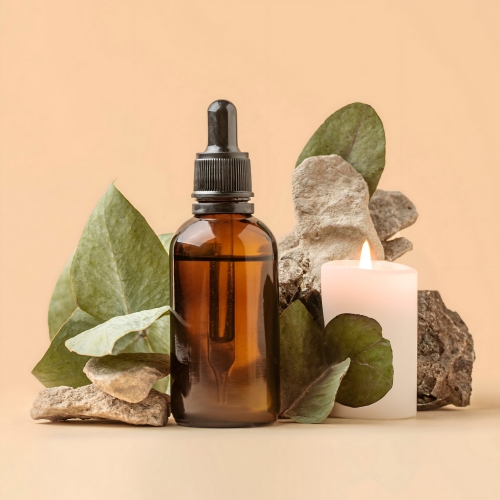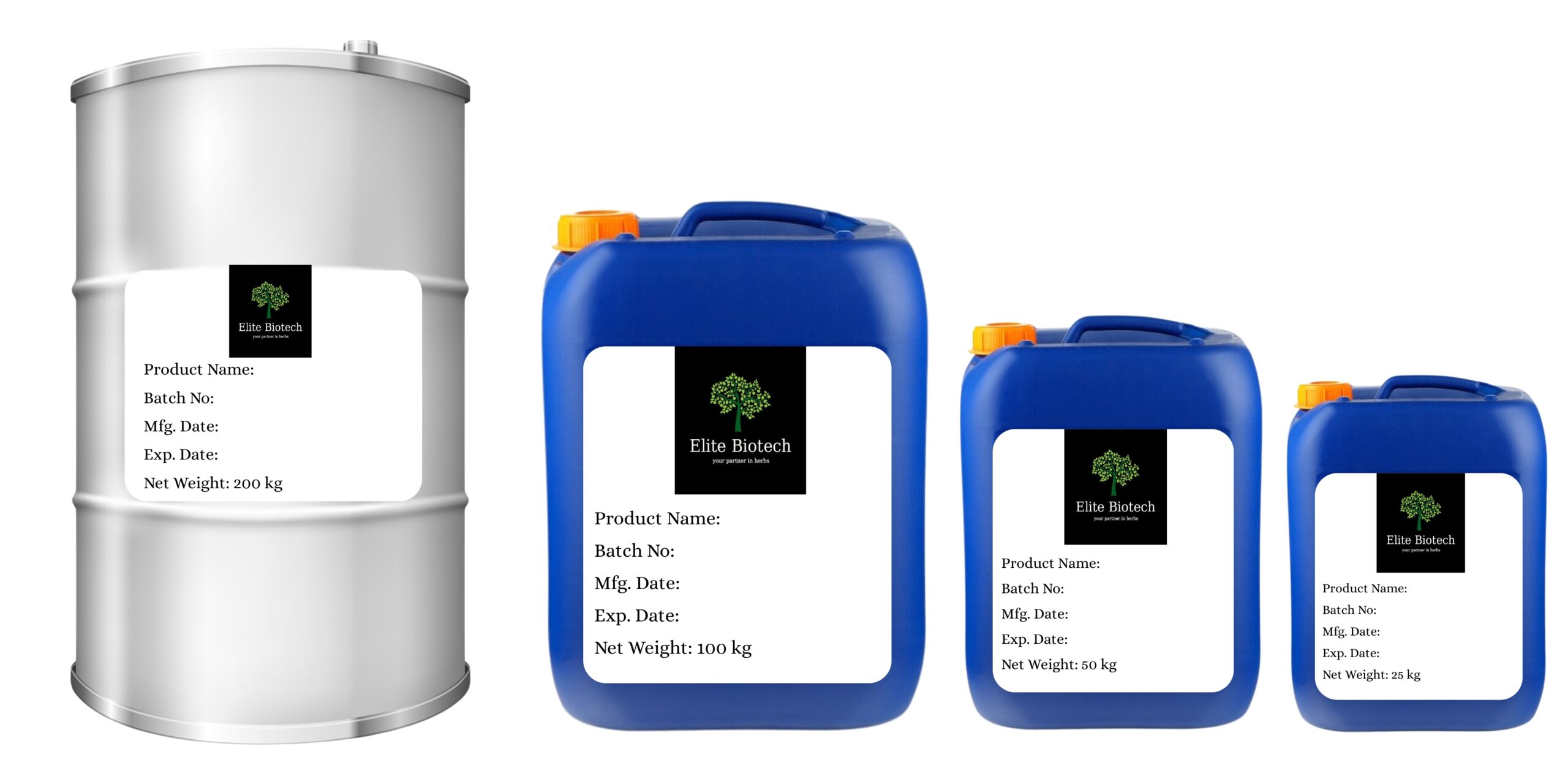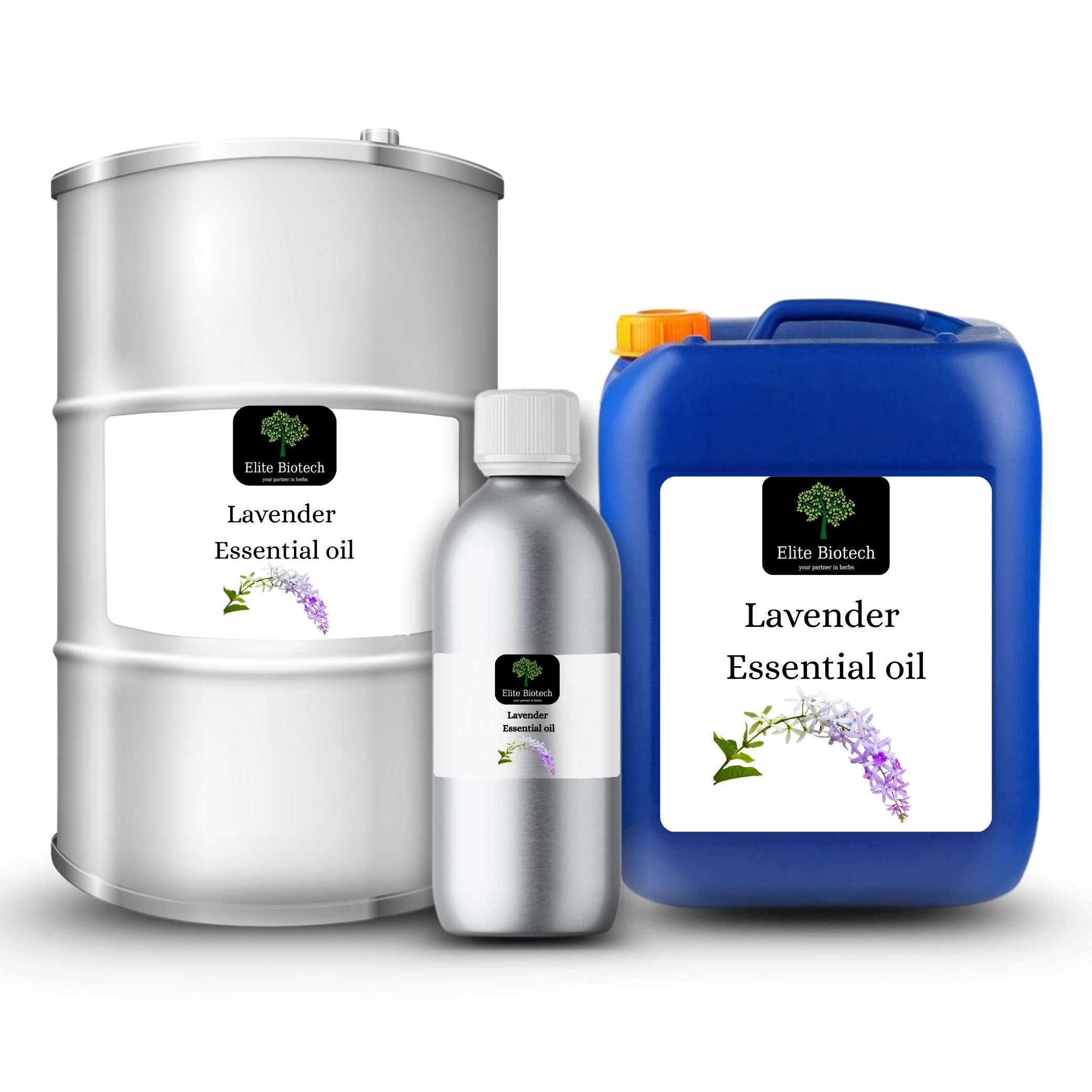Lavender Essential Oil
Lavender essential oil is generally regarded as the most versatile essential oil. Lavender essential oil has antiseptic, balancing, soothing and rejuvenating properties. The soothing properties of lavender essential oil make it an ideal oil for use in body skincare preparations for everyday problem skin. It is suitable for all skin types. Lavender essential oil is also widely used for relaxation and in promoting a restful night. It has a sweet and floral-herbaceous aroma with a woody undertone.




Lavender Essential Oil
Lavender Essential Oil, steam-distilled from the flowering tops of Lavandula angustifolia grown in Provence and India’s Nilgiri Hills, is a clear to pale-gold liquid celebrated for its calming, floral-herbaceous aroma. Rich in linalool, linalyl acetate and camphor, this oil delivers potent anxiolytic, antimicrobial and skin-soothing benefits. Its gentle scent promotes relaxation, supports restful sleep and enhances skin regeneration. Ideal for inclusion in aromatherapy blends, topical serums and functional personal-care formulations, Lavender Essential Oil bridges centuries of traditional use with modern quality standards. With third party–verified purity ≥ 98 % and a 24-month shelf life under cool, dark storage, choose Elite Biotech for guaranteed authenticity and competitive pricing, ensuring you receive 100 % pure, lab-tested oil at exceptional value.
Uses of Lavender Essential Oil

Pharmaceutical Industry
Lavender Essential Oil’s high linalool and linalyl acetate content provides calming support in sleep-aid capsules and inhalers. Its antimicrobial and anti-inflammatory actions make it a valuable ingredient in topical antiseptic gels and wound-healing ointments, with GMP-compliant distillation ensuring consistent therapeutic performance.

Food & Beverage Industry
In flavored syrups, confectioneries and botanical teas, Lavender Essential Oil imparts a subtle floral note and offers digestive-comfort benefits. Micro-encapsulation protects its delicate volatiles during pasteurization, enabling seamless inclusion in ready-to-drink wellness beverages and artisanal desserts without altering taste clarity.

Cosmetic & Personal Care Industry
In soothing facial mists, anti-aging serums and blemish-control creams, Lavender Essential Oil’s skin-calming and antiseptic properties help soothe irritation and promote barrier repair. Its gentle aroma elevates spa-grade massage oils, bath salts and hair-care formulations for a luxurious sensory experience.

Aromatherapy & Wellness Industry
Blended into diffuser blends, inhalers and roll-on applicators, Lavender Essential Oil’s floral-herbal scent induces relaxation, reduces stress and supports mood balance. Its mild sedative effect makes it a staple in meditation aids, sleep-support rituals and calming massage treatments.

Agrochemical Industry
As a botanical insect repellent, Lavender Essential Oil’s linalool-rich profile deters pests like moths and mosquitoes. Formulated into eco-friendly foliar sprays and storage sachets, it promotes crop protection and reduces post-harvest losses in organic farming and greenhouse systems.

Perfumery & Fragrance Industry
Perfumers prize Lavender Essential Oil for its fresh-floral top and middle notes, which add brightness and longevity to fougère, chypre and herbal-floral accords. Its natural fixative qualities enhance scent diffusion and balance in both niche and mainstream perfume creations
Why Choose Elite Biotech?
Elite Biotech delivers premium bulk Lavender Essential Oil sourced from certified organic farms, ensuring authenticity, sustainability and competitive industrial pricing.
- Rigorous Quality Control: Comprehensive third-party testing at every stage guarantees purity, potency and consistency.
- Sustainable Sourcing: Partnerships with ethically managed growers and traditional distillation methods protect both quality and the environment.
- Competitive Bulk Pricing: Flexible order sizes and attractive rates support industries from aromatherapy to pharmaceuticals and cosmetics.
- Dedicated Support: Expert technical assistance, custom documentation and proactive logistics ensure a seamless supply chain.
- Direct from Manufacturers: Traceable sourcing from certified facilities delivers the best value straight to your door.
- Fast Global Shipping: Efficient worldwide logistics meet critical timelines with precision and reliability.
- Proven Track Record: Trusted by leading industrial clients for consistent quality and long-term partnership success.
Disclaimer
Lavender Essential Oil is a concentrated substance and should be used with care. Always dilute before topical application and consult a healthcare professional if you have any concerns. Information provided is general and may not encompass all characteristics of this oil.
Caution
Keep out of reach of children and pets. Avoid contact with eyes and mucous membranes. If pregnant, nursing or taking medications, consult your doctor before use.
Packaging Sizes

Specification
| Parameter | Details |
| Product Name | Lavender Essential Oil |
| Botanical Name / INCI Name | Lavandula angustifolia Flower Oil |
| Product Category | Essential Oil / Aromatherapy Ingredient |
| Country of Origin | France (Provence), India (Nilgiri Hills) |
| Method of Extraction | Steam Distillation of Flowering Tops |
| Plant Part Used | Flowers |
| CAS No | 8000-28-0 |
| HSN No | 33012900 |
| Common Names | True Lavender Oil, English Lavender Oil |
| Blends Well With | Bergamot, Rosemary, Cedarwood, Clary Sage, Ylang-ylang |
| Industry/Application | Pharmaceuticals, Food & Beverage, Cosmetics, Aromatherapy, Agrochemicals, Perfumery |
| Grade | Therapeutic / Cosmetic Grade |
| Colour & Appearance | Clear to pale-gold liquid |
| Aroma | Floral, herbaceous |
| Form | Liquid |
| Solubility | Soluble in ethanol; dispersible in water with emulsifier |
| Purity | ≥ 98 % |
| Main Ingredients | Linalool, Linalyl acetate, Camphor |
| Shelf Life | 24 months under recommended storage |
| Specific Gravity | 0.885 – 0.900 |
| Refractive Index | 1.460 – 1.470 |
| Optical Rotation | – 5° to + 5° |
| Certificate | CoA, GMP, ISO available upon request |
| Testing | GC–MS profiling, microbial, heavy-metal, organoleptic analysis |
| Minimum Order Quantity | 5 kg |
| Delivery Timeline | 7 – 15 business days |
| Storage Instructions | Store in a cool, dry place away from light; keep container tightly sealed |
Certificates
No certificates available.
Frequently Asked Questions
Q1: How do you verify botanical authenticity for bulk Lavender Essential Oil?
Ans: We perform DNA barcoding and GC–MS profiling on each batch to confirm Lavandula angustifolia origin and linalool/linalyl acetate ratios, ensuring genuine composition.
Q2: Can linalool content be customized to client specifications?
Ans: Yes, Our distillation protocols allow standardization of linalool levels (e.g., 30–45 %) per client requirements, with full CoA documentation provided for every lot.
Q3: What stability testing do you offer for formulation development?
Ans: Our R&D team conducts accelerated and real-time stability studies in target matrices, confirming compatibility with excipients and processing conditions to guarantee product shelf life.
Q4: Do you provide technical and regulatory support for bulk orders?
Ans: Absolutely, We offer custom formulation guidance, regulatory dossiers and compliance documentation to expedite product registration and industrial scale-up for global markets.
Related products
Dill seed essential oil has stimulating, revitalising, restoring, purifying, balancing and cleansing properties. It has a fresh, herbaceous scent that is gentle, warm, and spicy.
Geranium essential oil (Pelargonium Graveolens Flower Oil) has stimulating and regenerating properties making this essential oil wonderful as a body skincare product for all skin types.Geranium essential oil is very useful for normalising excessively dry or oily skin. It is balancing and stabilising to both mind and body. The balancing and emotionally harmonising properties of geranium essential oil make it an excellent womens oil, especially during menstruation and the menopause. It has a powerful, sweet and floral aroma with a fruity undertone.
Cinnamon BARK essential oil (Cinnamomum Zeylanicum Bark Oil) is a strong antiseptic and has a cleansing effect. It has anti-fungal, anti-viral, bactericidal, warming, stimulating, energising and uplifting properties. Cinnamon BARK essential oil has a warm, spicy, oriental and somewhat harsh odour. Cinnamon BARK essential oil makes a lovely room fragrance, especially at Christmas – cinnamon, clove and orange oil together make a lovely festive fragrance.
Grapefruit essential oil is tissue toning and invigorating to tired skin and helps optimise a healthy immune system. Grapefruit essential oil is uplifting, refreshing and reviving to the mind and body. A detoxifying and purifying essential oil, optimising effective elimination and useful for cellulite. It has a fresh, citrus and uplifting aroma.
Eucalyptus essential is antibacterial, refreshing and stimulating. The penetrating qualities of eucalyptus essential oil make it useful in massage oil blends for muscular fatigue and ideal for normal to oily skins. Eucalyptus essential oil is useful in inhalations, it is head-clearing and promotes a natural sense of well-being. It has a woody, sweet, camphoraceous and fresh aroma.










